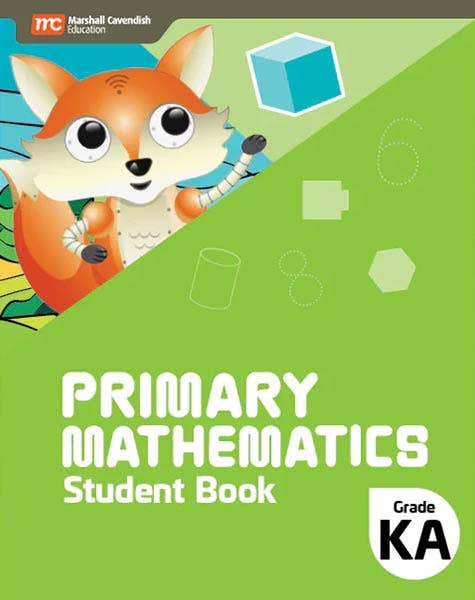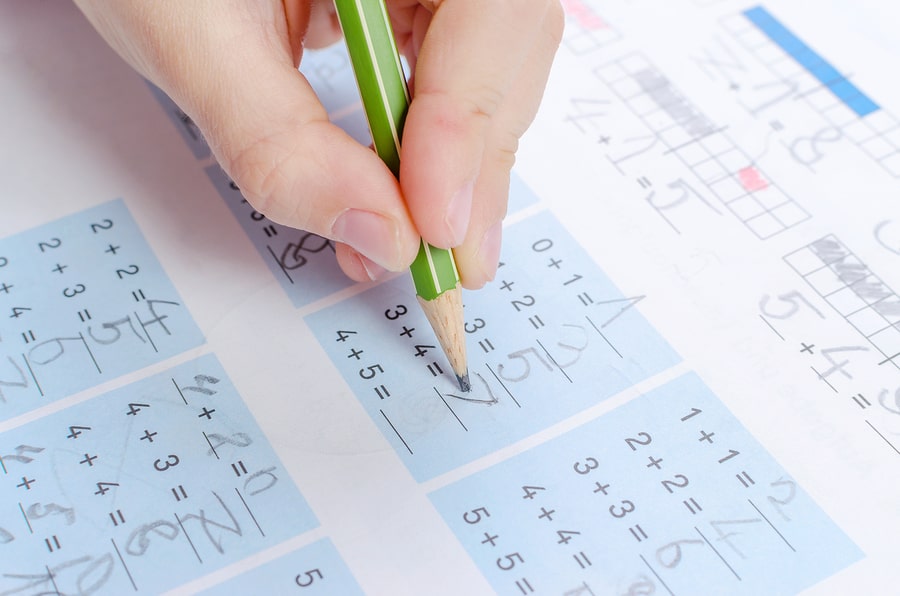Revealing the very best Faster Ways for Resolving Mathematics Problems Rapidly
In the domain name of maths, performance is key. Mastering shortcuts can change the way individuals come close to troubles. From leveraging the distributive building to using fast reproduction methods, these methods enhance both rate and accuracy. Furthermore, recognizing patterns streamlines intricate calculations. As one explores these techniques, they may discover surprising understandings that can transform their mathematical experience. What are one of the most efficient methods that can be easily integrated into day-to-day practice?
Understanding Mental Mathematics Techniques
Just how can one boost their estimation rate without depending on calculators? Grasping mental math strategies uses a functional service. By utilizing approaches such as breaking numbers into smaller, workable parts, individuals can streamline complex computations. For circumstances, when adding two-digit numbers, rounding each number to the closest ten can make mental addition less complicated before changing back to the original values.
One more reliable technique is to practice reproduction tables extensively, allowing fast recall of products (struggles in primary math). In addition, recognizing patterns in numbers can help with quicker calculations, such as using the residential properties of also and odd numbers. Regular practice with puzzles and games can even more improve these skills, making mental mathematics extra user-friendly
Inevitably, growing self-confidence in one's math capabilities permits for quicker decision-making and boosts overall mathematical efficiency. By incorporating these techniques, any person can greatly enhance their computation speed.
Utilizing the Distributive Residential Or Commercial Property
The Distributive Building is a basic principle in maths that simplifies computations by enabling multiplication throughout addition or reduction. It is important for pupils to realize its application with practical instances, which can enhance their analytic skills. Furthermore, identifying typical mistakes can additionally solidify their understanding and avoid mistakes in future computations.
Comprehending the Distributive Home
Understanding the distributive property can significantly simplify mathematical calculations. This basic residential or commercial property states that when multiplying a solitary term by an amount or distinction, one can distribute the reproduction across each term within the parentheses. As an example, in the expression a(b + c), one can reword it as ab + air conditioning. This approach not just simplifies estimations but likewise boosts understanding of exactly how numbers communicate (struggles in primary math). The distributive residential or commercial property is particularly valuable in algebra, where it assists in streamlining expressions and addressing equations. In addition, it lays the foundation for a lot more intricate principles, such as factoring and polynomial procedures. By comprehending the distributive building, pupils can create a solid foundation for dealing with a variety of mathematical challenges successfully
Practical Examples Illustrated
Why is it essential to use the distributive residential or commercial property in useful circumstances? The distributive property enables people to streamline complex calculations, making analytic more effective. For example, when determining the complete cost of multiple items, one can use the expression 5(2 + 3) to find the complete price of 5 products valued at $2 and $3. By distributing, the estimation comes to be 5 × 2 + 5 × 3, yielding a quicker result of $25. Another example is in algebra, where simplifying expressions like 3(x + 4) can be achieved through distribution, leading to 3x + 12. Such applications highlight the effectiveness of this property in different real-world scenarios, boosting both speed and precision in mathematical analytical.
Typical Blunders to Prevent
Although the distributive residential property is a powerful tool in mathematics, common blunders can cause inaccurate results. One constant mistake takes place when trainees forget to disperse the coefficient per term within parentheses. In the expression 3(x + 4), failing to apply the building correctly can lead to omitting the reproduction, generating an inaccurate answer. Another error includes misapplying the residential property by adding instead of multiplying, specifically when unfavorable indicators are involved. Furthermore, trainees might neglect to simplify the outcome, which can obscure mistakes made throughout distribution. Identifying and staying clear of these pitfalls can enhance analytic effectiveness and precision when utilizing the distributive home in various mathematical contexts.
Quick Multiplication Shortcuts
In the domain name of fast multiplication shortcuts, techniques like multiplying by powers of 10 and the doubling and halving method attract attention. These strategies can greatly streamline calculations, making them extra accessible. Comprehending these faster ways can improve performance in mathematical analytic.
Multiplying by Powers of 10
When multiplying by powers of 10, the procedure becomes extremely simple, as the operation mostly involves shifting the decimal point. For example, multiplying a number by 10 requires relocating the decimal one place to the right, while increasing by 100 necessitates over at this website a change of 2 places. This simplicity includes bigger powers, where each extra zero shows one more decimal change. For instance, multiplying 5.6 by 1,000 results in 5,600. This method greatly enhances rate and accuracy, as individuals can quickly imagine the outcome without intricate computations. Such performance is particularly valuable in psychological math or when time is restricted, permitting for rapid analytical in numerous mathematical contexts. Understanding this method is important for anyone aiming to enhance their arithmetic skills.
Doubling and Halving Approach
The Increasing and Cutting in half Technique offers an efficient strategy for quick multiplication, especially when taking care of also numbers. This technique entails transforming a reproduction issue into an easier kind by either doubling among the numbers and cutting in half the various other. As an example, to calculate 16 × 25, one can cut in half 16 to get 8 and double 25 to get 50, causing 8 × 50, which equates to 400. This approach streamlines computations, making them much more workable. It is particularly beneficial in mental mathematics, enabling individuals to resolve problems promptly and precisely. By leveraging this approach, professionals and next page trainees can boost their mathematical dexterity, thus boosting overall performance in mathematical jobs

Efficient Department Strategies
Although department usually positions challenges for numerous students, using reliable methods can greatly streamline the process. One efficient method is the usage of compatible here are the findings numbers, which includes rounding the divisor and dividend to less complicated values that are close to the original numbers. This approach makes psychological estimations more workable. One more technique is the evaluation method, where students can discover a harsh solution prior to implementing the exact department, providing a helpful criteria for precision.
Moreover, the lengthy department method stays a staple for dividing larger numbers. By breaking the process into smaller, much more digestible steps, students can keep clarity. The duplicated reduction technique can additionally be practical, particularly for those who deal with even more abstract principles. By systematically subtracting the divisor from the returns, people can envision the procedure. Overall, these techniques can improve division skills, bring about quicker and a lot more accurate problem-solving abilities.
Quick Addition and Subtraction Methods
How can learners boost their rate and precision furthermore and reduction? One efficient method is to make use of psychological mathematics approaches, such as breaking numbers into smaller, more manageable components. For example, when adding 47 and 36, one can first include 40 and 30 to get 70, then include the remaining 7 and 6 to get to 83. This method simplifies estimations and minimizes mistakes.
An additional method entails using the number line for visual learners, aiding them to see the connections in between numbers and improve their comprehension. In addition, practicing with devices like flashcards can enhance quick recall of basic amounts and differences.
Learners can benefit from acquainting themselves with benchmark numbers, such as rounding to the nearest 10, which allows for quicker evaluations. By incorporating these approaches right into their technique, learners can considerably improve their speed and precision in basic arithmetic procedures.
Leveraging Estimate for Quick Calculations
Estimation functions as an effective device for enhancing calculation speed, enhancing mental mathematics approaches successfully. By rounding numbers to their closest whole values, people can simplify complicated calculations, making it easier to come to an approximate outcome rapidly. When encountered with a problem like 198 + 267, rounding to 200 + 270 returns a fast estimate of 470, permitting the solver to assess the precision of the last response.
Estimation is particularly beneficial in circumstances including reproduction and division. By rounding elements to easier numbers, one can promptly determine approximate products or ratios. This strategy not just saves time yet additionally assists in identifying prospective errors in calculations.
Identifying Patterns and Solutions
Patterns and solutions are crucial devices in maths that allow individuals to resolve problems much more efficiently. Recognizing these patterns enables learners to recognize partnerships in between concepts and numbers, which can simplify intricate computations. As an example, recognizing the quadratic formula (ax ^ 2 + bx + c = 0) promotes fast options to different formulas.
Patterns in sequences, such as math or geometric progressions, aid people forecast future terms without comprehensive estimations. Solutions, on the various other hand, work as shortcuts, allowing for faster analytical by enveloping complex connections right into workable expressions.
Frequently Asked Concerns
How Can I Improve My Focus While Resolving Math Troubles Promptly?
To improve focus while solving mathematics issues promptly, one can remove disturbances, set certain objectives, method mindfulness methods, take routine breaks, and preserve a consistent study regimen to enhance concentration and mental quality.
What Tools or Apps Assist with Quick Math Problem-Solving?
Different devices and apps, such as Photomath, Microsoft Mathematics Solver, and Desmos, enhance quick math analytical. These resources supply detailed solutions, graphing abilities, and instant responses, making them beneficial for experts and students alike.
Exist Details Mathematics Shortcuts for Standard Tests?
Yes, particular mathematics shortcuts for standardized examinations consist of techniques like evaluation, understanding number homes, utilizing the process of removal, and grasping common solutions. These strategies boost rate and precision, enhancing general test performance.

How Do I Exercise Math Shortcuts Successfully?
To exercise math faster ways efficiently, individuals should consistently resolve varied issues, use on-line resources, and engage in timed drills. Consistency and reflection on blunders improve understanding, eventually causing improved speed and accuracy in calculations.
Can Shortcuts Be Applied to Complex Mathematics Issues?
Shortcuts can undoubtedly be related to complicated mathematics troubles, although their effectiveness differs. Mastery of foundational concepts and calculated thinking allows people to streamline processes, making it simpler to deal with intricate estimations efficiently.
By employing approaches such as breaking numbers right into smaller, workable components, people can streamline intricate computations. Additionally, recognizing patterns in numbers can help with faster calculations, such as using the residential properties of also and odd numbers. Estimation offers as an effective device for improving estimation rate, complementing mental mathematics strategies properly. By rounding numbers to their local whole worths, individuals can streamline complex computations, making it easier to arrive at an approximate result promptly. Acknowledging these patterns enables students to recognize relationships in between numbers and principles, which can simplify complicated estimations.